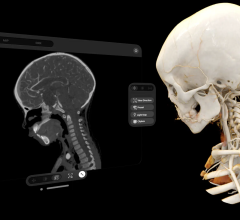
July 10, 2015 - Health data security and patient engagement are top priorities for the nation's hospitals, according to results of the 17th annual HealthCare's Most Wired Survey. The annual survey was released by the American Hospital Association's Health Forum and the College of Healthcare Information Management Executives (CHIME).
The 2015 Most Wired survey and benchmarking study is an industry barometer measuring information technology (IT) use and adoption among hospitals nationwide. The survey of more than 741 participants, representing more than 2,213 hospitals, examined how organizations are leveraging IT to improve performance for value-based healthcare in the areas of infrastructure, business and administrative management, quality and safety, and clinical integration.
According to the survey, hospitals are taking more aggressive privacy and security measures to protect and safeguard patient data. Top growth areas in security among this year's Most Wired organizations include privacy audit systems, provisioning systems, data loss prevention, single sign-on and identity management. The survey also found:
- 96 percent of Most Wired organizations use intrusion detection systems compared to 85 percent of all respondents. Privacy audit systems (94 percent) and security incident event management (93 percent) are also widely used;
- 79 percent of Most Wired organizations conduct incident response exercises or tabletop tests annually, a high-level estimate of the current potential for success of a cybersecurity incident response plan, compared to 37 percent of all responding hospitals; and
- 83 percent of Most Wired organizations report that hospital board oversight of risk management and reduction includes cybersecurity risk.
"With the rising number of patient data breaches and cybersecurity attacks threatening the healthcare industry, protecting patient health information is a top priority for hospital customers," said Frank Nydam, senior director of Healthcare at VMware. "Coupled with the incredible technology innovation taking place today, healthcare organizations need to have security as a foundational component of their mobility, cloud and networking strategy and incorporated into the very fabric of the organization"
As hospitals and health systems begin to transition away from volume-based care to more integrated, value-based care delivery, hospitals are utilizing IT to better facilitate information exchange across the care settings. This includes greater alignment between hospitals and physicians. According to the survey, the physician portal is a key factor in strengthening physician-hospital alignment:
- In 84 percent of Most Wired organizations, physicians can view and exchange other facilities' results in the portal compared with 63 percent of hospitals surveyed;
- 76 percent use the portal and electronic health record (EHR) to exchange results with other EHRs and health information exchanges compared to 56 percent of those surveyed; and
- 81 percent can communicate with patients via email or alerts in contrast to 63 percent of all respondents.
Driven beyond the requirements of Meaningful Use Stage 2, this year's Most Wired hospitals are utilizing the benefits of a patient portal to get patients actively involved in their health and healthcare. For instance, 89 percent of Most Wired organizations offer access to the patient portal through a mobile application. Other key findings include:
- 67 percent of Most Wired hospitals offer the ability to incorporate patient-generated data;
- 63 percent offer self-management tools for chronic conditions; and
- 60 percent offer patient-specific education in multiple languages.
The survey, conducted between Jan. 15 and March 15, 2015, is published annually by Health & Hospitals Network. Respondents completed 741 surveys, representing more than 39 percent of all U.S. hospitals.
For more information: www.hhnmag.com


 May 01, 2024
May 01, 2024 








